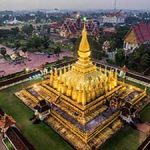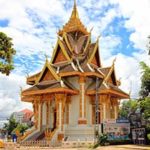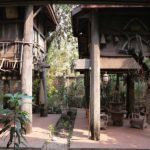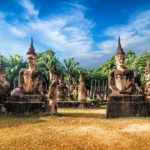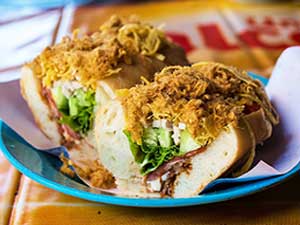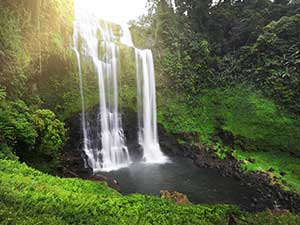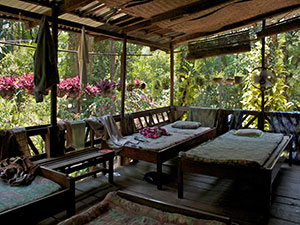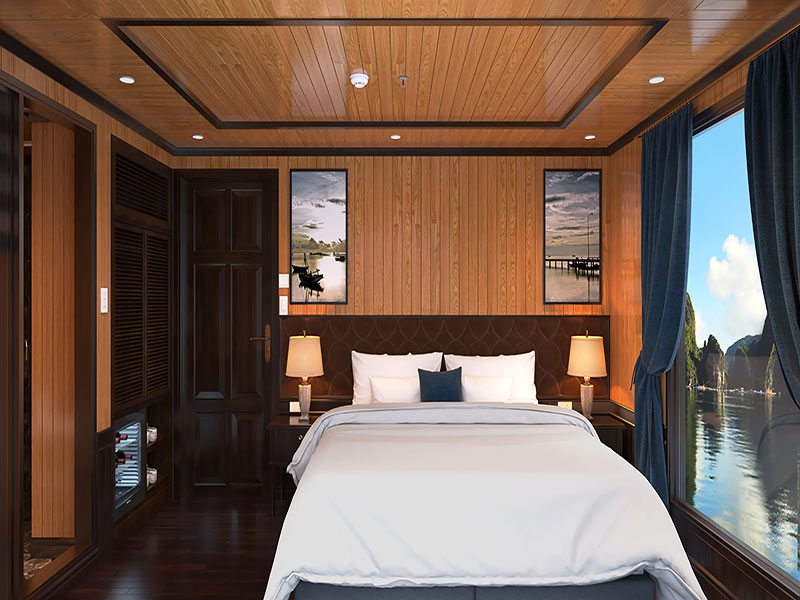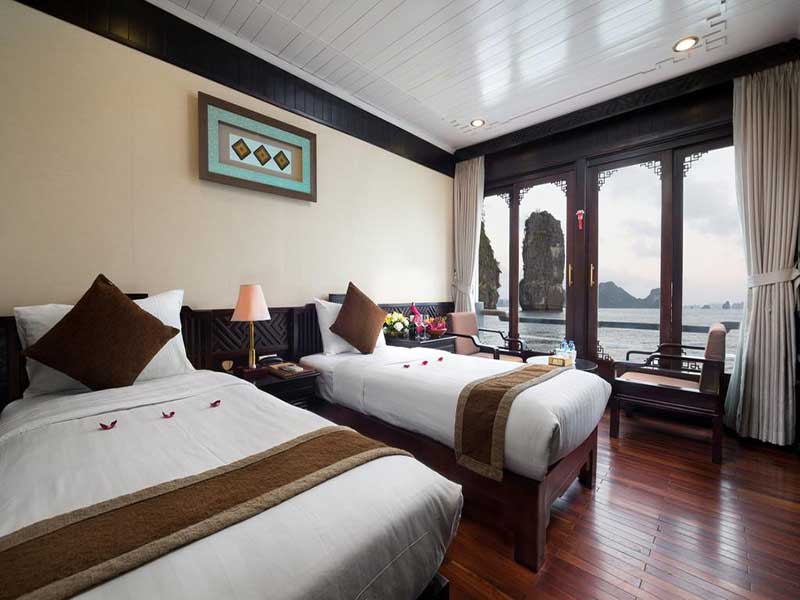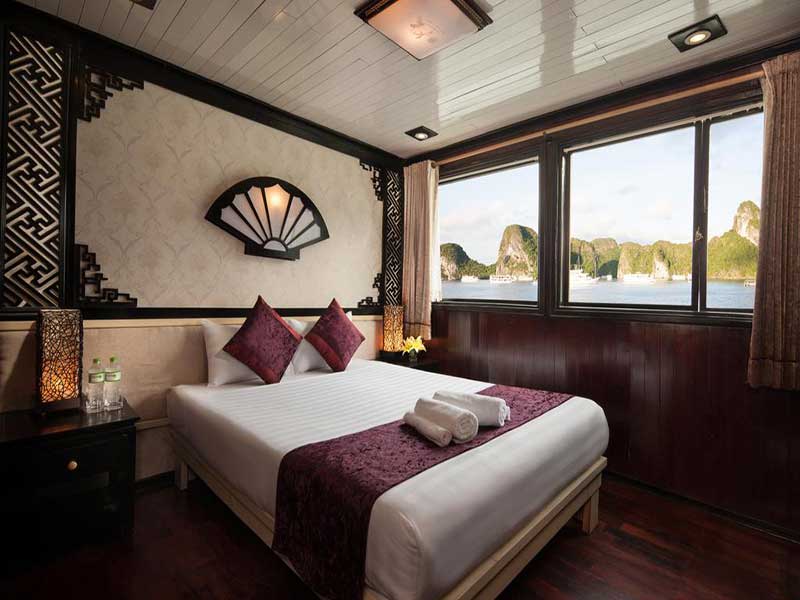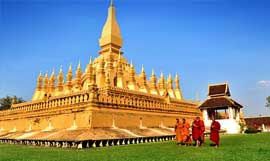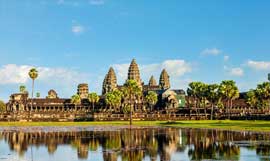Vientiane is a suitable city to relax for travelers. Vientiane is different from other busy cities of Asia. The Lao capital features great Buddhist art, attractive temples and lovely gardens. Situated on the banks of the Mekong River in southern Laos, the Vientiane capital has retained the legacy of French colonialism. Here is an overview of the most popular attractions in Vientiane. Traveling to Laos, when visiting Vientiane, you cannot miss the opportunity to visit these appealing destinations, which are attractive to visitors.
1) Patuxai Victory Monument
Patuxai Victory Monument stands on Lane Xang Boulevard, formerly known as Anou Savary. Patuxai is located between Vientiane and That Luang. Anou Savary was built in 1958, underneath and outside the building is built by the Arc de Triomphe of Paris, while the top and interior of the building are typical architectural characteristics of Laos. At the highest point of Anou Savary, we can see the whole landscape of Vientiane.

(Source: internet)
2) Pha That Luong
That Luang is located at the end of Lane Xang avenue, which is recognized as a World Heritage Site, is a symbol of the Lao Theravada Buddhism. The Lao People’s Democratic Republic printed the image of That Luang on Laos’ money and national emblem. The Luang is a Buddhist stupa built in 1566 on what remains of the 13th century Indian temple, the exterior is gilded. That Luang is considered the largest and the most beautiful Buddhist shrine in Laos. Here, every year in mid-November there will be a national big festival, That Luang festival. Entrance fee is 3.000 Kip/person.

(Source: internet)
3) Buddha Park (Xieng Khuan)
Buddha Park or Xieng Khuan located in Xieng Khuan (far from southeastern Vientiane about 25 km). There are more than 200 statues of Buddha and Hindu statue molded by concrete. Probably the most distinguishing statue is the giant Buddha which is 40 meters long. There are also human figures, gods, animals and demons. You can visit each circle of the Hell, and the Paradise by escalating into a pumpkin-shaped building by passing through the mouth of a 3 m high. You should go with tuk tuk if crowded (at the price 70.000 Kip) or by bus (number 45) near Ta lat Sao market (with 5.000 Kip per person), about 20-40 minutes will have a bus. An entrance ticket to the Buddha Park cost about 5.000 Kip.

(Source: internet)
4) Wat Ho Phra Keo
Entering Wat Ho Phra Keo (Temple of the Emerald Buddha), you will be like “a space of art” with sculptures, carvings; rare and precious objects. All items are colorful gold, silver, and jade. Wat Ho Phra Keo (Temple of the Emerald Buddha) exhibits many religious arts of Laos. This temple is considered as the second most important and famous temple after That Luang.

(Source: internet)
5) Wat Si Saket
Located on Setthathirath Road, close to Vientiane Boulevard Lane Xang, Wat Si Saket retains the original Buddhist architecture of Siam from its construction in 1818 by Chao Anouvong – Last King of Lane Xang. The temple is impressed by the corridor having walls with over 2000 pictures of bronze Buddha made of precious wood, ceramic, gilded and silver. There are more than 6.840 valuable Buddha statues in the temple.

(Source: internet)
6) Wat Si Muang
Wat Si Muang is located between Setthathirath and Samsenthai, which expresses a combination of Buddhist faith and original Lao belief. Wat Si Muang Temple is the name of a pregnant woman about 300 years ago. Wat Si Muang was built by the Lao people to worship and remember that woman. You can do the ceremony to tie sewing needle, according to Lao tradition at Wat Si Muang.

(Source: internet)
7) Lao National Museum
Lao National Museum is an ideal place to learn about the Lao people from prehistoric times as well as spend time sunbathing. The museum is located in a former French colonial building. Although it is decaying and some of the artifacts are blurred, this does not reduce the transmission content. The bottom floor focuses on the history of the country, with dinosaur bones and ceramic fragments. The upper level involved a more modern Laos, including the struggle for independence from the French colonialists, and the presence of the United States during the Vietnam War.

(Source: internet)
8) COPE Visitor Center
Laos is the most heavily bombed nation in history, with about 30% of the area bombed. Although Laos has now returned to peace, the bombs are still waiting to explode at any moment, threatening human life. COPE, an acronym for Cooperative Orthotic and Prosthetic Enterprise, works to restore pain to people affected by bombs and grenades. Visitors to the COPE center can learn more about unexploded ordnance in Laos as well as treatment for victims. COPE Visitor Center has a shop selling funny souvenirs, and especially with charity purpose.

(Source: internet)
9) Nam Ngum Reservoir
Nam Ngum is a large river in North and Central of Laos, which is an important tributary of the Mekong. Nam Ngum is 354 km long, originating from the northern mountainous region of Xieng Khouang, flowing south to Vientiane, and entering the Mekong in the south of Vientiane. The river basin is home to about one million Lao people. In the 1980s, Laos built a hydropower project on Nam Ngum at a section of Vientiane. In the mid-1990s, the dam was built to change the direction and supplement water to Nam Ngum reservoir in the dry season. Up to now, Nam Ngum Hydropower is still the largest hydropower project in Laos. Laos is also building and having plans to build four other hydropower projects on this river.

(Source: internet)
10) Tad Moun waterfall
This waterfall includes four main areas:
– Tad Moun 1 and 2
– Tad Palay
– Tad Vangnong 1 and 2
– Tad Vangnampheuak.
Tad Moun waterfall is situated on Sikhottabong, near the city center. From this waterfall, we can cycle and enjoy kayak experience.
11) That Dam (Black Stupa)
That Dam (Black Stupa) is located in the center of Vientiane capital. The tower is immaculate, which is entirely made of brick without mortar or decoration. This octagonal tower has 7 floors, built narrowly from the foot to the top. The tower dates from the 16th – 17th centuries. Certainly, the stupa was built within a pagoda, but over time, the pagoda was damaged and abandoned. People gradually built their houses around the stupa in the middle of a crowded residential area of Vientiane. This is also a special stupa, unlike other stupas of Laos.
After Laos gained independence from Myanmar in the sixteenth century, a monk from Burma came back and built a pagoda and a stupa and occupied it. This tower is a replica of a Myanmar tower.
Explore more article: Cope Center; Wat Sisaket; Wat Si Muang; Wat Ho Phra Keo; That Dam (Black stupa); Buddha Park; Phou Khao Khouay National Park; That Luang stupa; Patuxai monument; Laos National museum; Laos Textile museum

